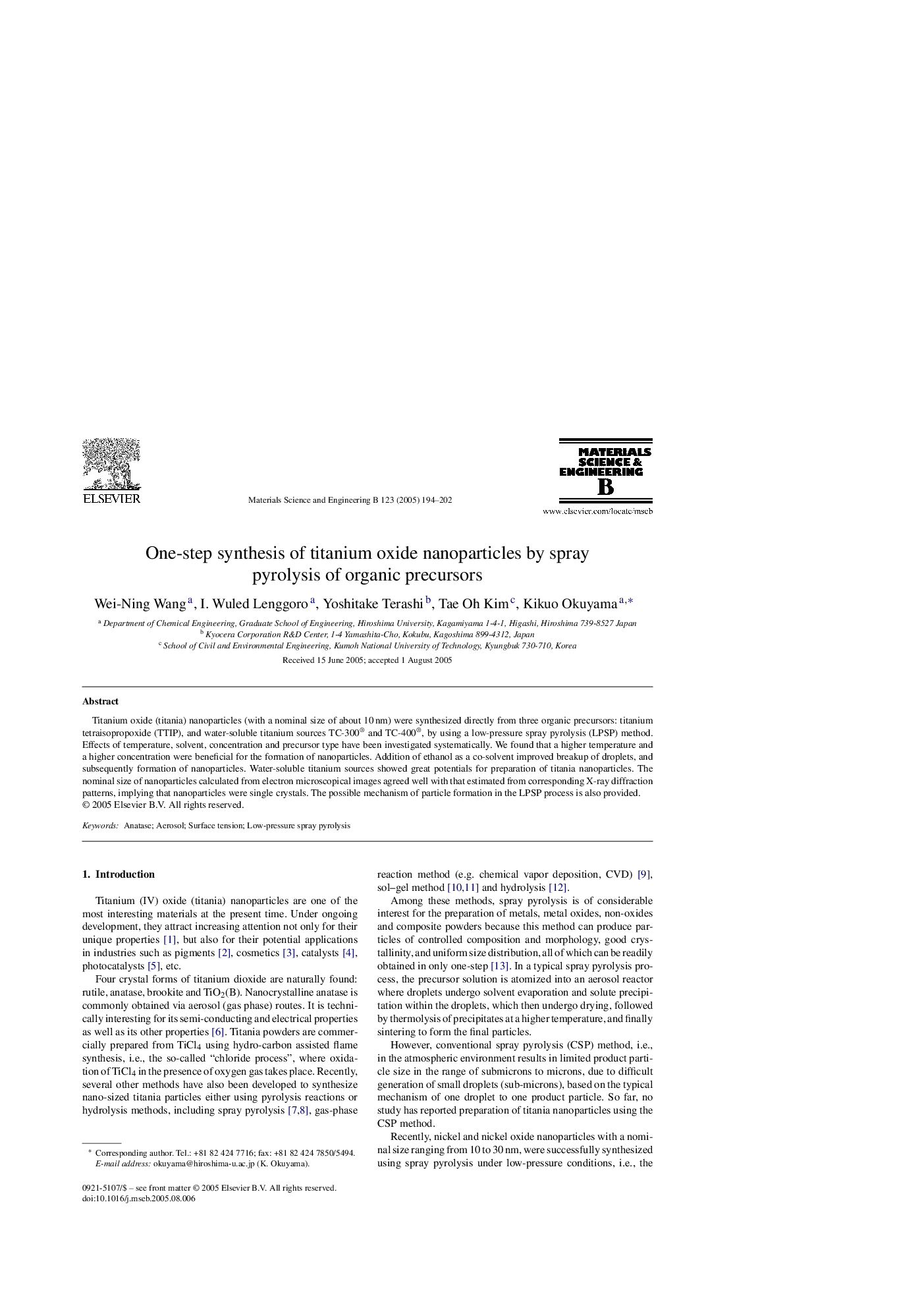| Article ID | Journal | Published Year | Pages | File Type |
|---|---|---|---|---|
| 10639962 | Materials Science and Engineering: B | 2005 | 9 Pages |
Abstract
Titanium oxide (titania) nanoparticles (with a nominal size of about 10Â nm) were synthesized directly from three organic precursors: titanium tetraisopropoxide (TTIP), and water-soluble titanium sources TC-300® and TC-400®, by using a low-pressure spray pyrolysis (LPSP) method. Effects of temperature, solvent, concentration and precursor type have been investigated systematically. We found that a higher temperature and a higher concentration were beneficial for the formation of nanoparticles. Addition of ethanol as a co-solvent improved breakup of droplets, and subsequently formation of nanoparticles. Water-soluble titanium sources showed great potentials for preparation of titania nanoparticles. The nominal size of nanoparticles calculated from electron microscopical images agreed well with that estimated from corresponding X-ray diffraction patterns, implying that nanoparticles were single crystals. The possible mechanism of particle formation in the LPSP process is also provided.
Keywords
Related Topics
Physical Sciences and Engineering
Materials Science
Electronic, Optical and Magnetic Materials
Authors
Wei-Ning Wang, I. Wuled Lenggoro, Yoshitake Terashi, Tae Oh Kim, Kikuo Okuyama,
